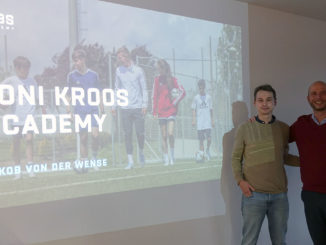
The first time I heard of examinations[1] on the relevance of silence for communication, I was fascinated. This “nothing” was not only very manifest, but also incredibly multi-layered. It could mean all kinds of things. We use silence – if one can say so – only very rarely with deliberation (e.g. when we meditate – or when we strive to remain silent even though we’re about to explode) but – as we do a lot in our communication – unconsciously and following rules that are inscribed, among others, in our culture.
Watzlawick/Beavin/Jackson already said it: You cannot not communicate![2] Australian aboriginals have developed sign languages that they use even if they speak the same language and are able to communicate by speech normally (ethnologists and linguists differentiate between as many as 250 different languages among the Australian aboriginals!), because they must comply with social taboos of contact. The prohibition of speech between mother in law and son/daughter in law gave these languages their name: mother-in-law languages (R.W. Dixon, who described this for the Dyirbal language[3], later rejected this term again. The designation avoidance language was then introduced, which better reflects the diversity of taboos and avoidance strategies).
Sophisticated forms of the standard language were developed for communicating with taboo relatives (e.g. the mother in law), with lexical avoidance strategies. If there was a prohibition of speech, a sign language developed where communication was necessary after all. Sign language as an avoidance language is also used in other cases of prohibited speech. For example, the documentary “The Human Animal, Ep. 1 – Language in the Body” by Desmond Morris shows two women, neither of whom is deaf or mute, and who otherwise speak the Australian aboriginal language Warlpiri, engage in a comfortable chat – gesticulating in a complex sign language; as a sign of mourning for the death of a tribe member, they were not allowed to speak for several months.[4]
When Silence Speaks
Silence can “speak”: When we follow a presentation that leaves only very brief periods of silence and in which the presenter barely takes the time to breathe, his breathlessness will rub off on us very easily. We will feel pressured, hectic, as if there was not enough time. A well-placed pause can emphasize a statement, raise awareness among the audience (or even wake them up). It is a request to react, involves the audience, gives them time to look at their own notes, collect themselves, draw a breath, catch the eyes of other listeners, in short: to do everything the audience needs to “digest” the speech.
One can also compensate for own nervousness by deliberately choosing to pause – for example by marking pauses in the lecture cards or because one forces oneself to have a sip of water. In conversation, breaks are needed as well in order to give the other the opportunity to react. We have internalized the rules for the speaker change (turn taking): We raise our voice at the end of our contribution, look at the other, and as the listener we know exactly when it is our turn to speak. Usually, there is a small pause. Of course, we also know discussions where others keep interrupting us, ignoring the rules for the speaker change, or interpreting them as they wish – which is understandable in a heated debate, in which he who speaks a lot and has the last word has all the power.
No Time for Breaks
We easily lose our rhythm when our partner follows a different one, is faster or slower than we are. High speed permits less time for breaks. There may be various reasons for this, including cultural ones. This also varies. A study by Schade-Scherzer showed that the speaking speed in German radio news in the last century increased: 4.5 syllables per second went on air from 1933 to 1945, but this increased to 5.34 syllables per second for 1990 to 2001.[5] Looking at the duration of pauses shows a similar picture: 0.64 second pauses on average from 1933 to 1945 shrunk to 0.44 seconds between 1990 and 2001.[6] The difference is even more dramatic in the break ratio (17.3% as compared to 10.1%).[7]
Regional and Individual Differences
We adjust our speaking behavior to that of our speaking environment, also in terms of speed and pauses in our speech. The differences between East and West Germans are often generalized. However, there are great regional differences as well. Individual variations are a matter of course anyway. A generally slower speed with greater pauses and longer time to reaction at speaker change rather seems to apply to East Germans, while those from West Germany speak faster, are quicker to fill breaks with text and react more quickly.[8]
This causes frustrations on both sides: The bolder speaker is annoyed when the discussion partner does not follow his prosodic (voice modulation) and nonverbal prompts to switch speakers. Maybe he thinks he needs to prompt harder, repeating the last argument with more emphasis. The “slower” discussion partner in turn grows frustrated: he understood the prompt to switch speakers and is starting to answer, for which he has some more time according to his own rules – and is interrupted because the other one thinks he needs to continue speaking because his discussion partner says nothing. The “slower one” feels pressured, overrun, “talked at”. These differences are in the fractions of seconds!
Each of these two discussion partners thinks that the other one is acting wrong. How do we find out what may have caused the conflict in such cases? Improving awareness of many different possible misunderstandings is one way, as we know from research on intercultural communication. Notes and recommendations as those from the German-Finnish Chamber of Commerce may help. They provide advice to business people for negotiating with Finns, such as:
“Letting others finish: It is considered impolite in Finland to interrupt the speaker in business negotiations and talks. Therefore, a dialogue or discussion is often replaced by a sequence of monologues in which the previous speaker’s arguments or even those of the one before him will only be dealt with after a longer pause.”[9]
Maybe “only after a longer pause” should be underlined. Even though monologues in a discussion are difficult to bear for us (at least for me), longer pauses are virtually impossible: Such a note helps us with the question of “wrong” or “right” and makes it superfluous. Where possible, the positions should be exchanged: What does the respective party expect, and which disappointments reason the complaint?
“East-West conflict” in a Project Work
The following example is about a group of students (six students from six different countries), who joined more or less voluntarily for a project (they felt “left over” after the other students had formed groups more quickly). The group was fighting – or rather frustrated, since there was no open dispute. They claimed that cooperation or a progress of the project was no longer possible in this constellation. In this case, the “learning target” included solving conflicts on their own if possible. The situation therefore was already severe when the students approached the lecturer and complained that they couldn’t continue in this way and didn’t know what to do anymore.
Asked what was actually the matter, the two complainants said: “We work and do everything, we make suggestions, we take the initiative, and the others do nothing, nothing at all.” That sounds familiar when we think of project work. There is hardly ever any group that does not complain about the refined restraint of one of its members. Another part of the group in turn claimed that they didn’t get to say anything. They would have liked to contribute but “they” didn’t value their judgement or contribution. They were also frustrated. No, it couldn’t continue this way. They were being suppressed.
In order to find out what was actually going on, everyone now had to write down what the progress in cooperation was looking like from their own point of view, and what their own contribution was to the success or failure of the project. These assessments returned nearly a classical East-West conflict: The bolder students (from Western industrialized states – USA, Germany) had taken the initiative at once. They were “people of action”, filling every gap (in time, space, language) with their activities. Of course, they did so in the best intentions and with the deep conviction that they were driving their project. There was nothing one could have said against this. In between, they tried repeatedly to involve the other students (from Eastern countries – Eastern Europe, Asia) with brief prompts. They would have liked some spontaneous and, most of all, quick reactions, just as they would have given them.
The students accused of a lack of cooperation had hesitated for a long time before they had put down this personal assessment. They only did so after being prompted several times, and promised that their words would be treated confidentially. Of course, they had also considered the suggestions of the former, had listed to them and promised all cooperation. They had also offered to do this or that (not just to complete orders, but to also investigate and research on their own) but the others (bolder ones) had ignored this, hadn’t listened, but just acted. They felt affronted and run over, since their suggestions and contributions had not been observed at all, and they let the others do what they wanted. Standing up for themselves and demanding that they be heard just wasn’t their thing. As a result, both sides were frustrated, stagnating and inactive.
A talk together in which this difference was emphasized and the action-oriented group specifically was asked to just listen ended with confused faces. The end of the project had come dangerously close. The written project report, which suggested solid cooperation of the group, came as a surprise. The oral presentation of the group, in which everyone made an effort and in which they presented a consistent, committed shared presentation was even more surprising. The lecturers had not expected such a convincing group result. When asked how this had happened, they said that they had just made it work for the sake of the grades. They had just all taken a small step towards the respective other.
And when I thought about what the moral of the story might be, I remembered: maybe you should “just shut up” now and then! But – Google be thanked – that’s actually available as a complete guidebook already![10] Well. That’s all I have to say about this.
[1] e.g. Saville-Troike, Muriel; Tannen, Deborah (1985). Perspectives on Silence. New Jersey: Norwood
[2] Watzlawick, Paul, Beavin, Janet H., Jackson, Don D. (2011, first English publication 1967). Menschliche Kommunikation. Formen, Störungen, Paradoxien. Bern: Huber, p. 58.
[3] Dixon R. M. W. (1972). The Dyirbal Language of North Queensland (= Cambridge studies in linguistics. 9). Cambridge University Press, Cambridge
[4] Morris, Desmond (1994). The Human Animal Ep. 1 – The Language in the Body, documentary BBC Nature, retrieved from: https://www.youtube.com/watch?v=7qUKiHZbVwc, starting in minute 18:38.
[5] Scherze-Schade, Sven (2004). Deutsche Radionachrichten: Der Wandel ihres Sprachgebrauchs 1932 – 2001. Dissertation TU Berlin, called from: https://depositonce.tu-berlin.de/bitstream/11303/1330/1/Dokument_40.pdf, p. 123.
[6] Ibid., p. 129.
[7] Ibid., p. 133.
[8] Klein, Olaf Georg (2002). Warum Ostdeutsche und Westdeutsche aneinander vorbeireden. In: Bundeszentrale für politische Bildung (2002). Deutsche Einheit. Retrieved from: http://www.bpb.de/apuz/26714/warum-ost-und-westdeutsche-aneinander-vorbeireden-?p=all
[9] Deutsch-Finnische Handelskammer (n.d.): Finnen sind (etwas) anders. Retrieved from: http://www.dfhk.fi/finnland/kulturunterschiede/
[10] Topf, Cornelia (2012) Einfach mal die Klappe halten. Warum Schweigen besser ist als Reden. 4th edition. Offenbach: Gabal.






